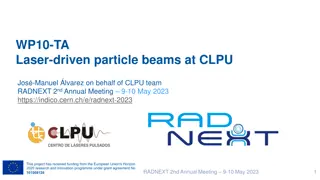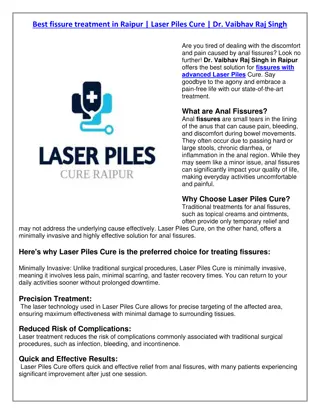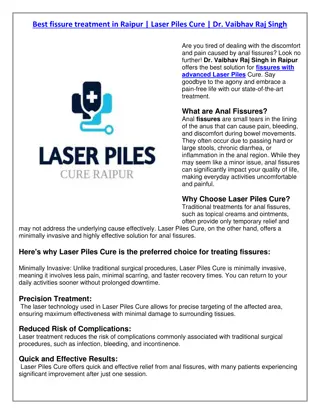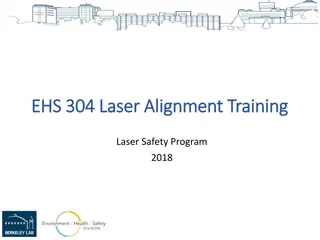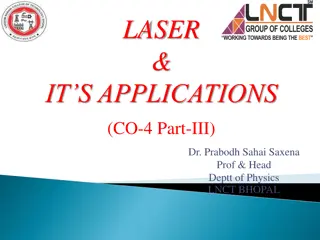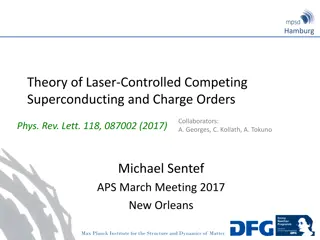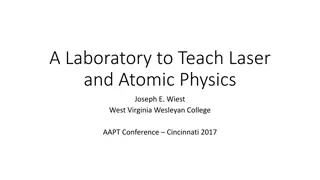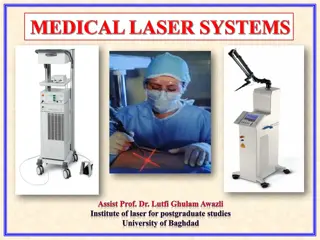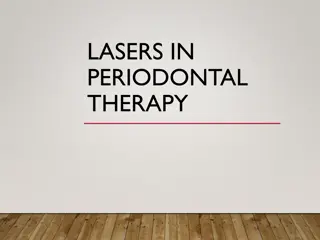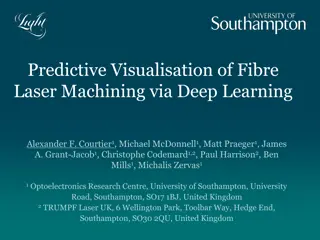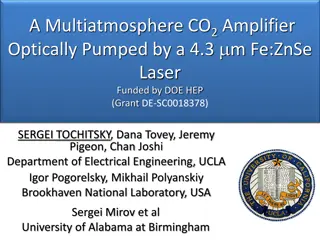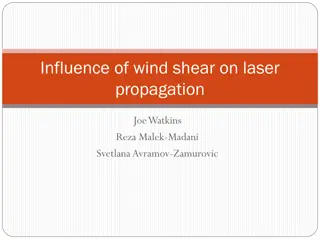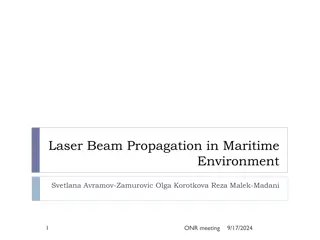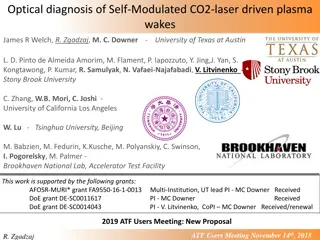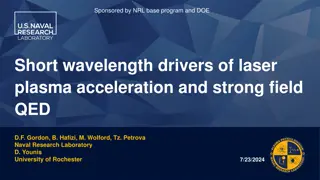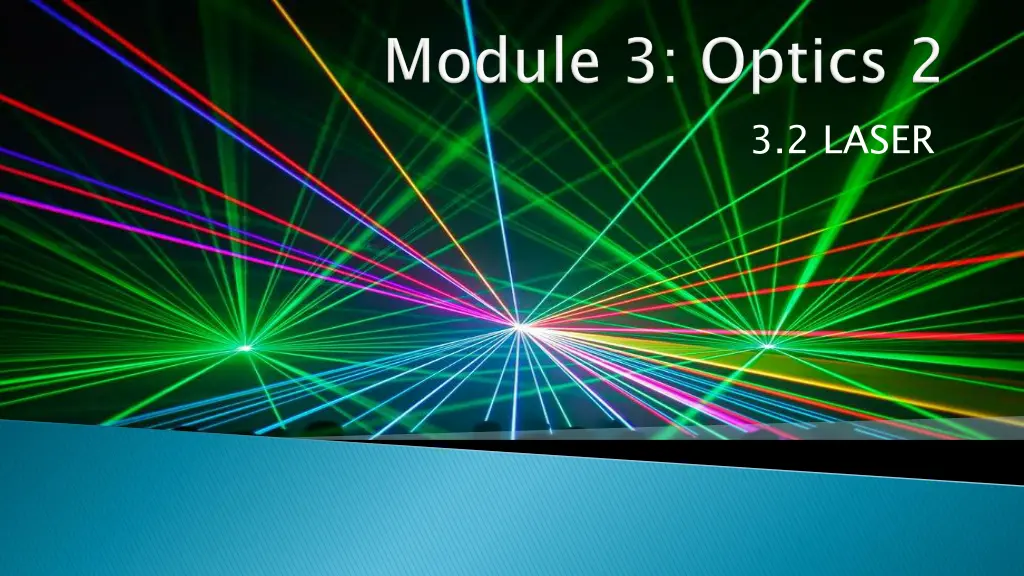
Understanding Laser Theory
Explore the principles behind laser technology, including light amplification by stimulated emission of radiation. Learn about the characteristics of laser beams such as monochromaticity, coherence, and directionality. Delve into the physics of stimulated and spontaneous transitions in the context of Einstein's relation and population inversion for achieving lasing action.
Download Presentation

Please find below an Image/Link to download the presentation.
The content on the website is provided AS IS for your information and personal use only. It may not be sold, licensed, or shared on other websites without obtaining consent from the author. If you encounter any issues during the download, it is possible that the publisher has removed the file from their server.
You are allowed to download the files provided on this website for personal or commercial use, subject to the condition that they are used lawfully. All files are the property of their respective owners.
The content on the website is provided AS IS for your information and personal use only. It may not be sold, licensed, or shared on other websites without obtaining consent from the author.
E N D
Presentation Transcript
Light Amplification by the Stimulated Emission of Radiation Source producing an intense, concentrated and highly parallel beam of coherent light and works on principle of Quantum theory of light. Light Amplification by the Stimulated Emission of Radiation
Monochromaticity Intensity photons are concentrated in a small region. Coherence the same phase with one another. Directionality traveling along the optical axis of the system. Monochromaticity Highly monochromatic radiation Intensity Laser beams are highly intense as a large number of Coherence Perfectly coherent as the emitted light waves has Directionality Travels in a single direction as the photons are
From Einsteins relation: A21/ B21= 8h3/c3 From Planck s radiation law: u( ) = 8 h 3/c3(ehv/kT 1) Thus, A21/ B21u( ) = ehv/kT 1 Ratio of stimulated transition to spontaneous transition R = R = B B21 21N N2 2u( ) / A u( ) / A21 21N N2 2 = 1/( = 1/(e ehv kT 1) 1) hv/ /kT In the microwave region, will be higher compared to spontaneous emission In the microwave region, h will be higher compared to spontaneous emission h << <<kT kT, the number of stimulated emission , the number of stimulated emission In the visible region of the spectrum, spontaneous emission will be predominant and stimulated emission negligible. In the visible region of the spectrum, spontaneous emission will be predominant and stimulated emission negligible.
Ratio of stimulated transition to absorption transition from Einsteins relation: R = B21u( ) N2/ B12u( ) N1 R = N R = N2 2/ N / N1 1 To make stimulated transition exceed the absorption transitions: The state population inversion has to be achieved. For this reason, the lasing material is doped with certain impurities such that is obtained. To make stimulated transition exceed the absorption transitions: The state population inversion has to be achieved. For this reason, the lasing material is doped with certain impurities such that metastable is obtained. metastable atomic energy level atomic energy level The larger value of the ratio of stimulated transitions to spontaneous transitions is to be achieved by considering a level. The larger value of the ratio of stimulated transitions to spontaneous transitions is to be achieved by considering a metastable level. metastable energy state as the higher energy energy state as the higher energy
Population Inversion generating a large number of atoms in the higher energy state than that of the lower energy state. Population Inversion An artificial situation that is established by
Pumping the process which raises the atoms from lower energy state to higher energy state in the active medium. Methods: Optical Pumping: create population inversion by optical photon Electrical Pumping: plasma which liberates electrons which, in turn, are accelerated by the strong electric fields present in the tube. These electrons, on collision with neutral gas atoms, makes some atoms jump to excited state. Chemical Pumping: energy Pumping The phenomenon of achieving population inversion, i.e Methods: Optical Pumping: a light source is used to supply luminous energy and Electrical Pumping: electrical discharge converts the gas medium into Chemical Pumping: an exothermic chemical reaction is used to produce
Lasing photons due to the transition of atoms from the metastable state to the ground state after achieving population inversion. Lasing The process which leads the emission of stimulated
An optical cavity optical resonator mirrors that forms a standing wave cavity resonator for light waves. Optical cavities are a major component of lasers, surrounding the gain medium and providing feedback of the laser light. optical cavity, resonating cavity optical resonator is an arrangement of resonating cavity or
solid state laser gas lasers liquid dye lasers semiconductor lasers
Uses of He in interferometry in laser printing in bar code reading in holography for larger distance measurement, i.e. in laser modulation telemetry in the target aiming device used in guns The advantages of Gas laser over Solid state laser The light from He-Ne gas laser has high degree of monochromacity and directionality than that from solid state ruby laser. This happens due to imperfection in the crystal, thermal distortion and scattering. The solid state laser need cooling in time of operation while the gas lasers can operate continuously without any cooling. Uses of He- -Ne Laser Ne Laser The advantages of Gas laser over Solid state laser

